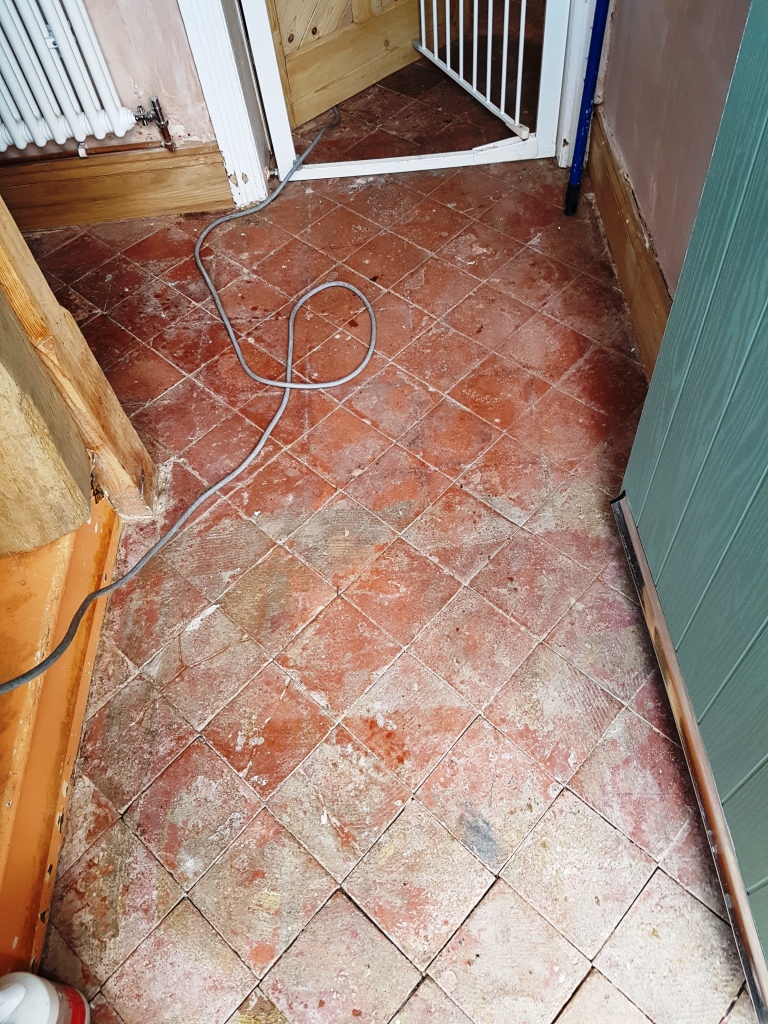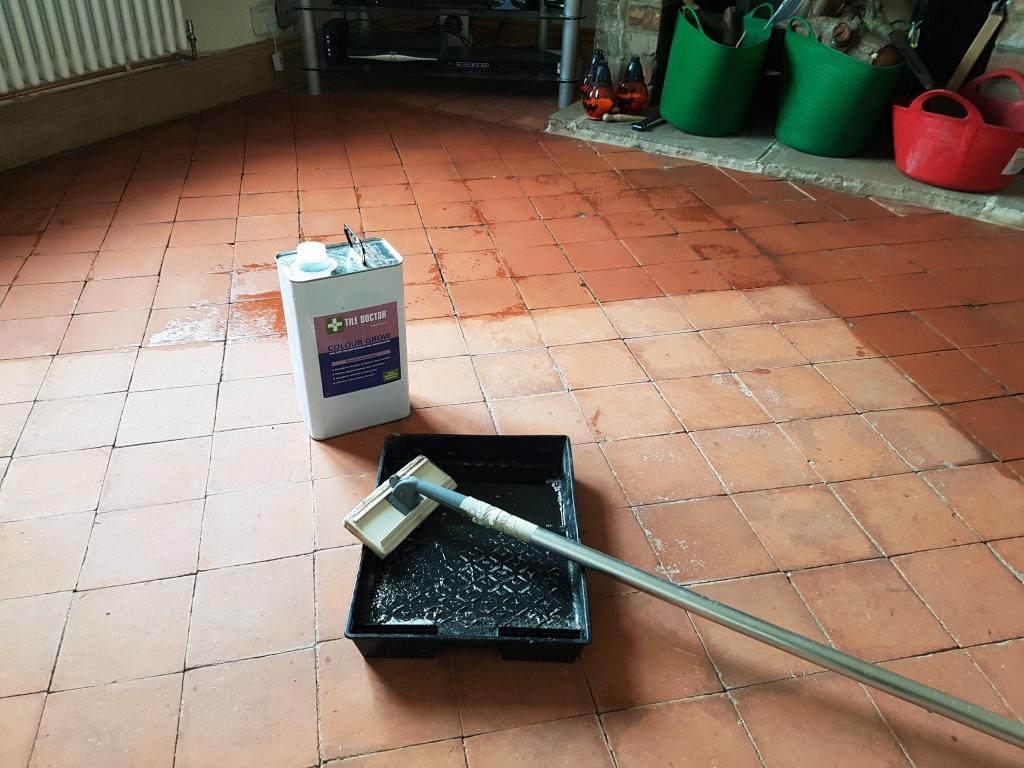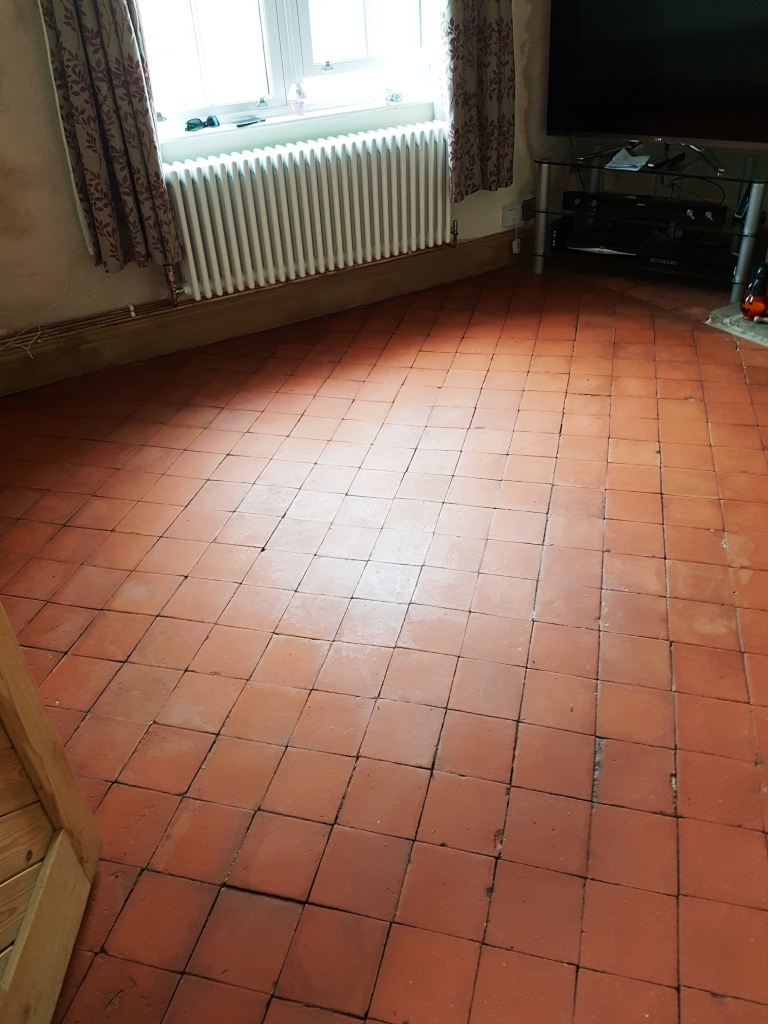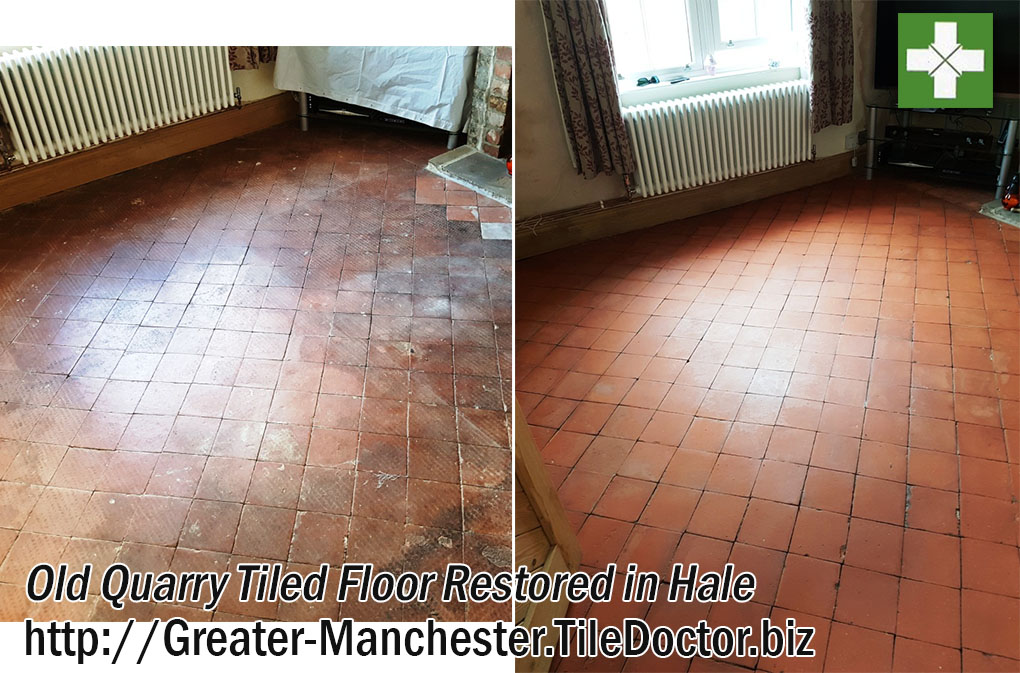Dirty Quarry Tiled Floor Transformed in Hale
We are very often contacted by customers to restore tiled floors they didn’t even know existed. Usually, the tiles will be hidden away underneath either carpet or, in some cases, linoleum. And, once the tiles are discovered, the likelihood is that the property owners want to have them restored to their original condition which is understandable as original features definitely add value to a property.
Here’s an example of this sort of work that I recently undertook at a property in the affluent suburb of Hale which is only ten miles from Manchester. The recently discovered floor in question was formed of very nice (but also very dirty) Quarry tiles. The customers had just bought the property and, having pulled up the carpets on the ground floor, were surprised with what they found.

They really wanted to get the floor restored in order to highlight the original character of the property, however, it was very heavily soiled and marked with glue deposits that proved very difficult for them to remove. As a result, they opted to search online for a solution – finding Tile Doctor in the process.

In the first instance, I visited the property to conduct a test clean and, with the customers pleased the result, we agreed dates for the full restoration to be carried out.
Cleaning a Dirty Quarry Tiled Floor
For cleaning the floor I started by using Tile Doctor Remove & Go, a product which is specially designed for removing coatings such as sealers, waxes and adhesives from tile – including the types of glue deposits left upon the removal of carpet. I left the product to dwell on the floor for 10 minutes before scrubbing it in to the tiles with a black scrubbing pad fitted to a rotary machine.
Next, I removed the now soiled cleaning solution with my wet vacuum and rinsed the floor several times with water to neutralise it, again followed by extracting the water after every rinse. Overall, the cleaning process was a success, but there were a few problem areas where the adhesive proved particularly difficult to remove.

To these areas I applied Tile Doctor NanoTech HBU Remover, which is a heavy build-up remover designed to work where other cleaners won’t. It utilises nano-sized particles to penetrate below tough stains and eliminate them. This was left to work its magic for about half an hour.
Following this, I steamed the tiles to soften the adhesive even further and then scrubbed the problem areas with hand held black scrubbing pads. This cleaning combination worked really well to clean the problem areas and all I had to do next was rinse them properly, before leaving the whole floor to dry.

Sealing a Quarry Tiled Floor
I returned to the property after allowing the floor to dry for three full days. Thankfully, I found that there were no damp issues to address, and so I could proceed with sealing without a problem.

The customers wanted to keep the floor as natural looking as possible, so I opted to use Tile Doctor Colour Grow, our impregnating sealer which soaks into the pores of the tile protecting it from within enhances the colours in the process and leaving a matte finish. I applied several coats before polishing off the excess using cotton cloths.

Looking at the before and after photos, I think you can agree that the floor is transformed! Certainly, my customers agreed – the newly restored Quarry floor will be a real asset to the property.

Source: Dirty Quarry Tiled Floor Hidden Under Carpet Restored in Greater Manchester
